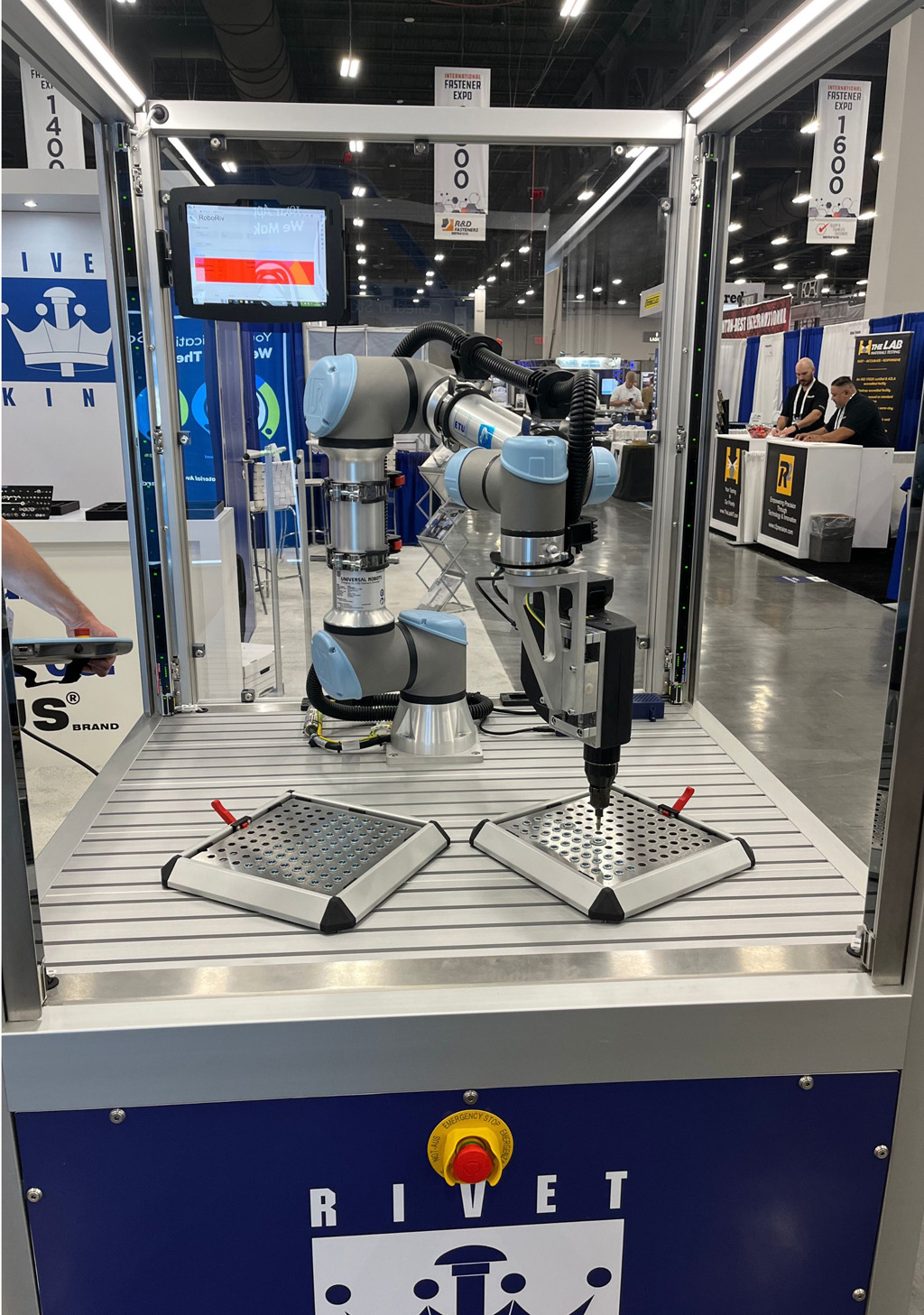Vote for Best in Show at The ASSEMBLY Show SOUTH

More than 200 exhibitors will display the latest manufacturing products and services at the 2nd annual ASSEMBLY Show South, including fastening tools, adhesives, dispensing equipment, conveyors, robots, software and, of course, automated assembly systems.
To help draw attention to the breadth and quality of new technologies on display, we are holding a “Best in Show” contest at the event, which will take place May 1-2 at the Music City Center in Nashville, TN. Attendees will be invited to vote for the best product during the show on Wednesday, May 1. The winners will be announced on Thursday, May 2.
The editors of ASSEMBLY Magazine have nominated the following 10 products as being particularly innovative. Which is best? You decide!
2024 NOMINEES
ASGbdtronic
Epson Robots
Inficon
Lattice Technology
Momento International
MS Automation
Retrocausal Inc.
Rhino Tool House
RivetKing
2023 Winners
 Smart Workbench for Screwdriving
Smart Workbench for Screwdriving
In February 2023, a medical device manufacturer approached ASG with a need for a manual assembly line for a new product. ASG supplied two 72-by-36-inch SmartBenches equipped with three-color pick-to-light systems and multiple X-PAQ precision screwdriving systems in both in-line and pistol-grip configurations. The static-safe benches integrated seamlessly with the customer’s manufacturing execution system, which allowed the company to send work instructions directly to the benches and, in return, receive all the torque data from the screwdrivers for full lot traceability and quality control.
Booth 1237
ASG, Div. of Jergens Inc.
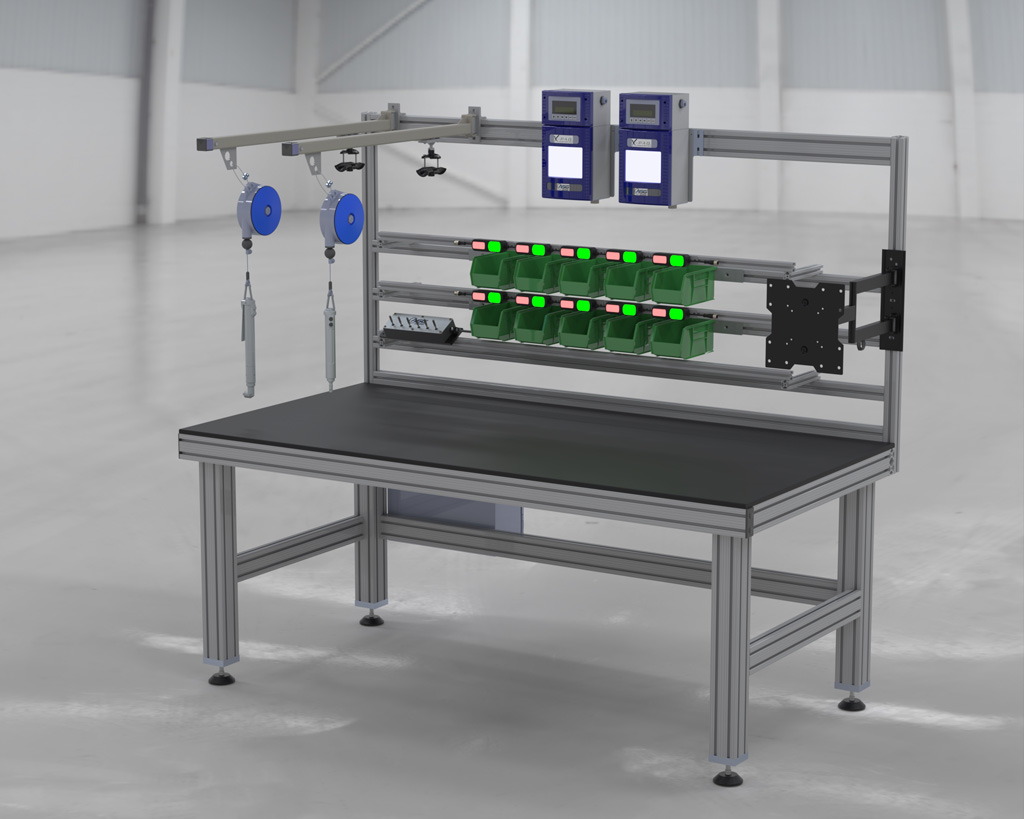
 Dispensing System Is Fast, Precise
Dispensing System Is Fast, Precise
The smartCORE automated dispensing system features automatic calibration of the pump. By capturing the pump’s reference curve and making automatic adjustments, consistent dispensing is ensured. The system is aware of the pump’s output capacity across the entire range of its performance. This reduces the need for manual interventions and reduces material consumption. It also shortens downtime during pump changes. The system is ready to operate immediately after calibration.
Turn-back detection ensures a consistent start of dispensing and prevents dripping at the end of the dispensing cycle. Turn-back parameters are determined automatically.
The system monitors the pot life of the material in the mixing tube. When necessary, it flushes only the reactive segments from the tube. This reduces material consumption. The system also facilitates quick and easy wiping of the nozzle. Wiping is done directly at the edge of the cup. No additional components, such as wiping wires, are necessary. The entire edge of the cup is used. This prevents the nozzle from being contaminated by residues from the previous wiping cycle.
Optional speedUP software automatically adjusts dispensing performance and speed to the geometry of the product. This ensures uniform material application and maximizes dispensing speed.
The system can simulate the dispensing process without requiring any axis movement, which saves time and reduces waste. The optional smartEDIT software extension allows engineers to quickly create and adjust dispensing parameters and programs. The user interface offers visual programming and real-time feedback to simplify program creation.
Booth 1119
bdtronic
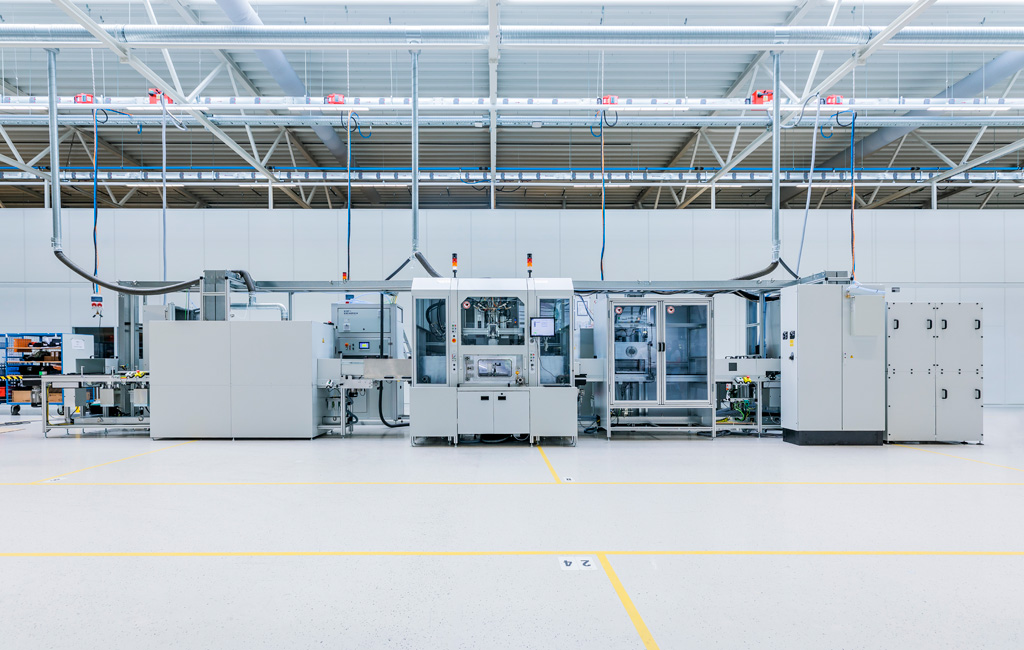
 SCARA Is Fast, Accurate
SCARA Is Fast, Accurate
The GX-B Series SCARA robots are fast and accurate. The GX10B has a reach of either 650 or 850 millimeters and can handle a maximum payload of 10 kilograms. The GX20B has a reach of either 850 or 1,000 millimeters and can handle a maximum payload of 20 kilograms. The robots can be mounted to a table, wall or ceiling.
The robots integrate seamlessly with Epson’s RC+ automation development software and are powered by the RC700E controller. Gyroplus vibration-reduction technology provides fast production speeds, smooth motion control and fast settling times. There’s no ringing or overshoot.
Standard and advanced safety features allow for increased productivity and worker protection while potentially minimizing machine footprint due to the reduction of physical barriers. Clean room, static-safe and IP65 models are also available.
Options include vision guidance, parts feeding, force guidance, conveyor tracking, fieldbus connectivity and API.net. OPC UA connectivity provides next-level integration and monitoring.
Booth 743
Epson Robots

 Leak Testing System for Battery Cells
Leak Testing System for Battery Cells
Designed for installation in 19-inch racks, the ELT Vmax tests the tightness of battery cells filled with liquid electrolyte—whether lithium-ion or sodium-ion cells, prismatic, round and button cells with a rigid housing, or pouch cells with a soft, bag-like housing.
The device detects electrolyte leaking from filled cells in a vacuum chamber. The system is designed for flexibility and easy integration into test systems. It was designed specifically for use in mass production lines. For example, the system does not have an integrated vacuum pump, since the use of particularly powerful external pumps is recommended for testing batteries during mass production. However, the system is just as accurate and sensitive. It can identify leak rates as low as 5 x 10-7 millibar-liter per second.
Thanks to its 19-inch housing and its serial and fieldbus interfaces, the instrument is easy to install in any test system. If required, it is also available with a separate control panel, including display. The system is also approved for use in dry rooms.
Because it quickly detects gross leaks, the device ensures that electrolyte does not contaminate the test system, so it is immediately ready for the next measurement. A carrier gas mode also ensures a high degree of flexibility: The carrier gas flow can be variably adjusted, whereby leaked gaseous electrolyte is transported to the sensor by an air flow at the desired speed. For example, a carrier gas flow of 10 standard cubic centimeters per minute can reduce the response time to just a fraction. This allows a carrier gas flow to be defined for each test requirement that represents an optimum compromise between response time and sensitivity.
For mass production, it is advisable to regularly check that the test system is working properly. For this purpose, Inficon offers fully automatic calibration with a calibration leak called E-Check 2.0. This calibration leak, which is 100 percent filled with DMC electrolyte solvent, is integrated into the vacuum chamber and always ready for operation. This also enables automatic test measurements at preset intervals.
The system also works in test stations with several vacuum chambers, so there are no waiting times for the device during evacuation and ventilation. The system is constantly in measuring mode.
Booth 754
Inficon
 Virtually Plan and Simulate Assembly Processes
Virtually Plan and Simulate Assembly Processes
XVL Studio software can help manufacturers plan and simulate complex assembly processes. With the software’s ability to work with native 3D CAD data, manufacturers can drag and drop parts from their engineering bill of materials and build the assembly process tree. This streamlines planning and ensures accuracy, since the data comes directly from the CAD system.
New features have been added to increase the ability of the software to detect clashes and measure tolerances with CAD-level accuracy. This ensures that potential issues are identified and addressed before the assembly process begins, saving time and preventing costly mistakes. Dynamic Collision Check provides the ability to detect a collision between two parts while one is moving and the other is in its final location. Engineers can add a view of the collision to annotation views. Automatic Path Finder enables engineers to include trace lines to show how the part travels into its final location.
A key attribute of XVL Studio is its lightweight structure, which makes it easy to move the entire product into virtual reality. This provides a visual immersion for validating assembly processes and allows manufacturers to make changes and adjustments in real-time.
Booth 663
Lattice Technology

 Device Measures Clamp Load
Device Measures Clamp Load
TensionCam measures clamp load in a bolted joint using a special sensor module. The module is equipped with a fingerprint sensor. But, instead of analyzing fingerprint patterns, the module, when docked to a bolt head, takes images of a precision machined pattern in a cavity of the bolt head. It then sends the information to the TensionCam app, which can make conclusions about bolt tension and clamp load based on changes in the pattern.
Once the sensor module is docked on the bolt, the measurement takes place automatically. All measurements are saved on a server and available in trend diagrams for each joint. Measurements are accurate to within 5 percent of full scale.
Booth 1123
Momento International
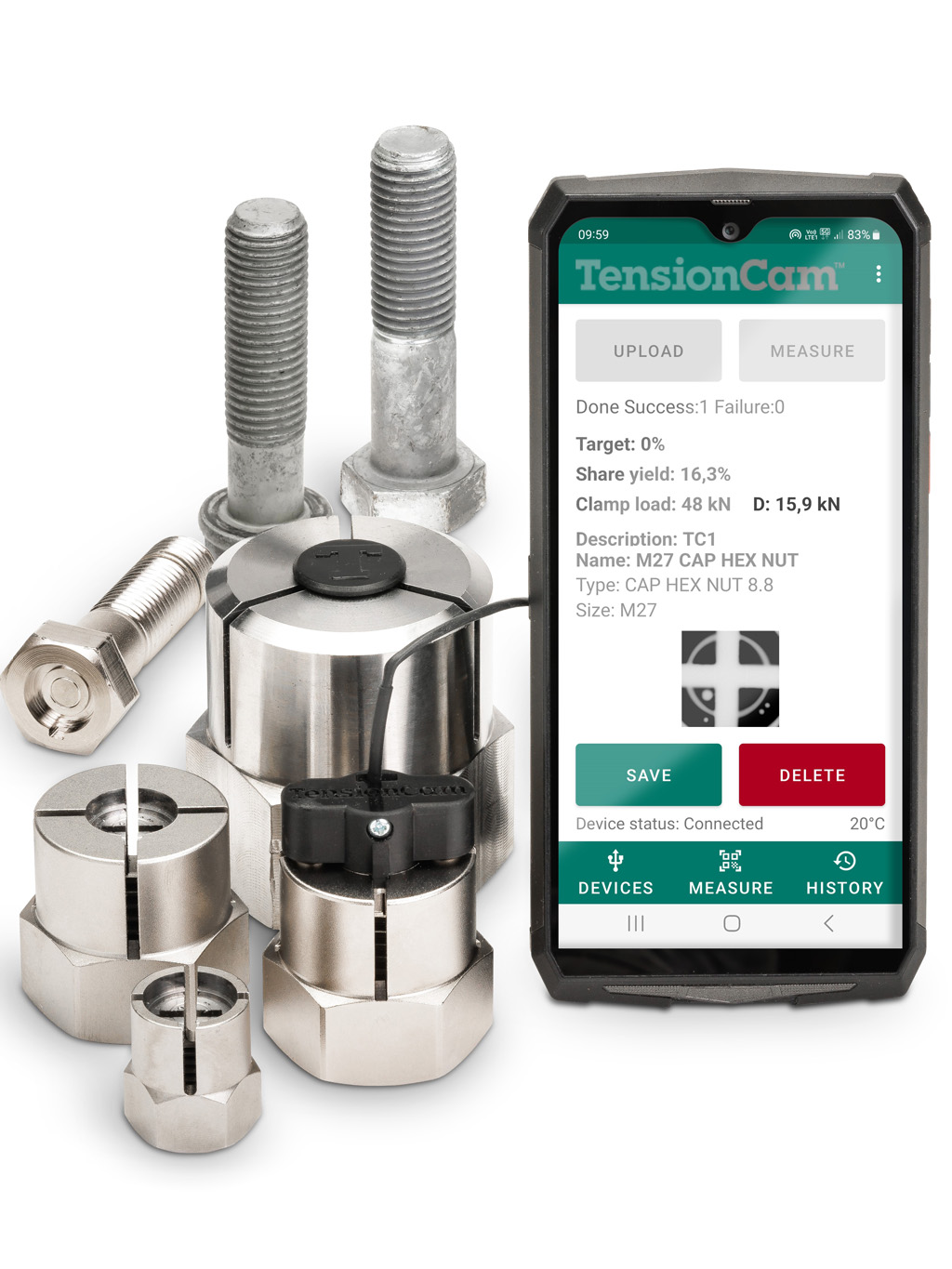
 3D Bin Picking for Automated Stud Welding
3D Bin Picking for Automated Stud Welding
A gas cap manufacturer needed an automated machine that could run a progressive stud welding process “lights out” for an entire shift or more. The goal was to have an operator fill part feeders, start the machine, and then walk away for eight hours or more of run-time before returning to replenish parts.
MS Automation designed and built a custom system for the job. 3D vision guidance enables a six-axis robot to accurately pick a stamped cap from dunnage that holds thousands of loose pieces. The robot places the cap into a centering fixture designed to precisely locate any cap size. (The caps are supplied in four diameters.) A SCARA robot introduces unfinished caps to the welding process and removes finished product.
The process is built around a rotary indexing table that moves caps through a progressive stud welding operation. Six feeder bowls supply studs to four welding guns, allowing for multiple product recipes to be completed automatically. A final inspection identifies bad parts, which are segregated at pack-out.
Changeover between cap sizes is fast and easy, thanks to quick-release dial nests and swapping of cap dunnage using a forklift.
Booth 937
MS Automation
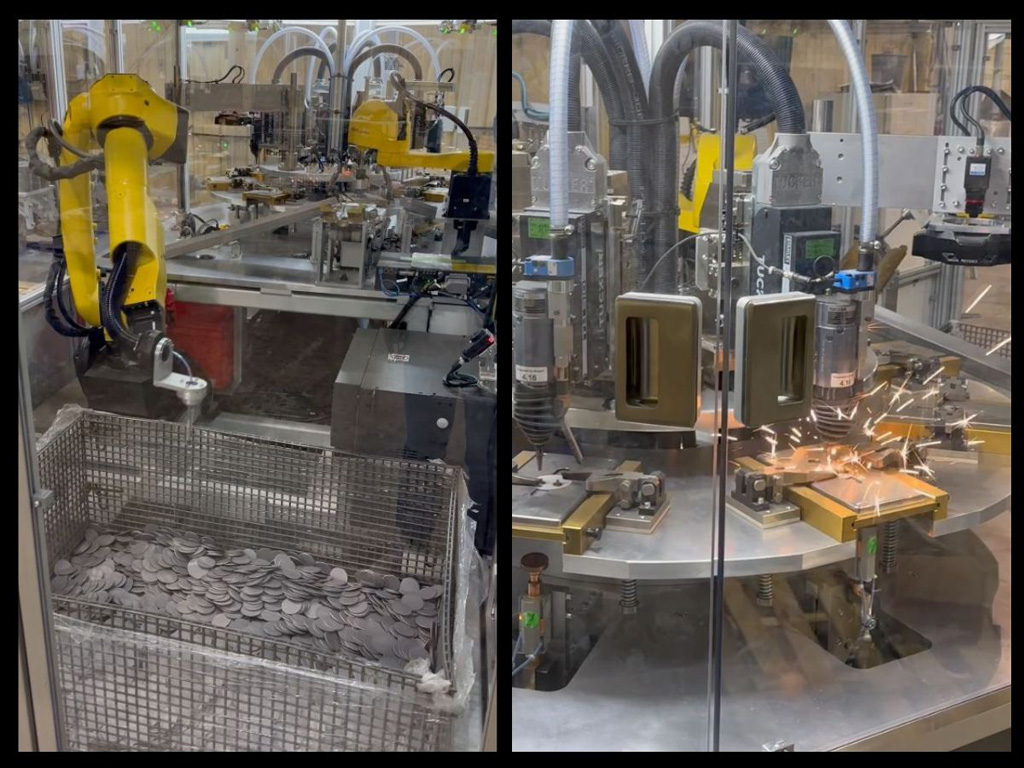
 AI-Based Software for Continuous Improvement
AI-Based Software for Continuous Improvement
Kaizen Copilot is AI-powered, video-based continuous improvement software. The software enables industrial engineers to perform twice the work in half the time. All engineers need is a video of one cycle to rapidly optimize a manufacturing process or station design. The software automatically analyzes video from a workstation, identifies areas for improvement, and provides actionable recommendations.
Using the software is easy. Engineers capture video footage of as little as one assembly cycle using a smartphone or webcam and upload it to the platform. Kaizen Copilot’s “step discovery” technology autonomously parses the video into meaningful steps. Next, it conducts a time and motion study, a failure modes and effects analysis, and an analysis for steps that add value and those that do not. AI then provides recommendations for the most efficient and safe station design, based on Lean Six Sigma and the Toyota Production System.
The software is also equipped with an extensive ergonomics suite that uses computer vision to identify high-risk intervals in videos. It automatically analyzes operations according to various ergonomic standards, including REBA, RULA, NIOSH lifting equations, SNOOK tables and the Hand Strain Index.
Booth 519
Retrocausal Inc.
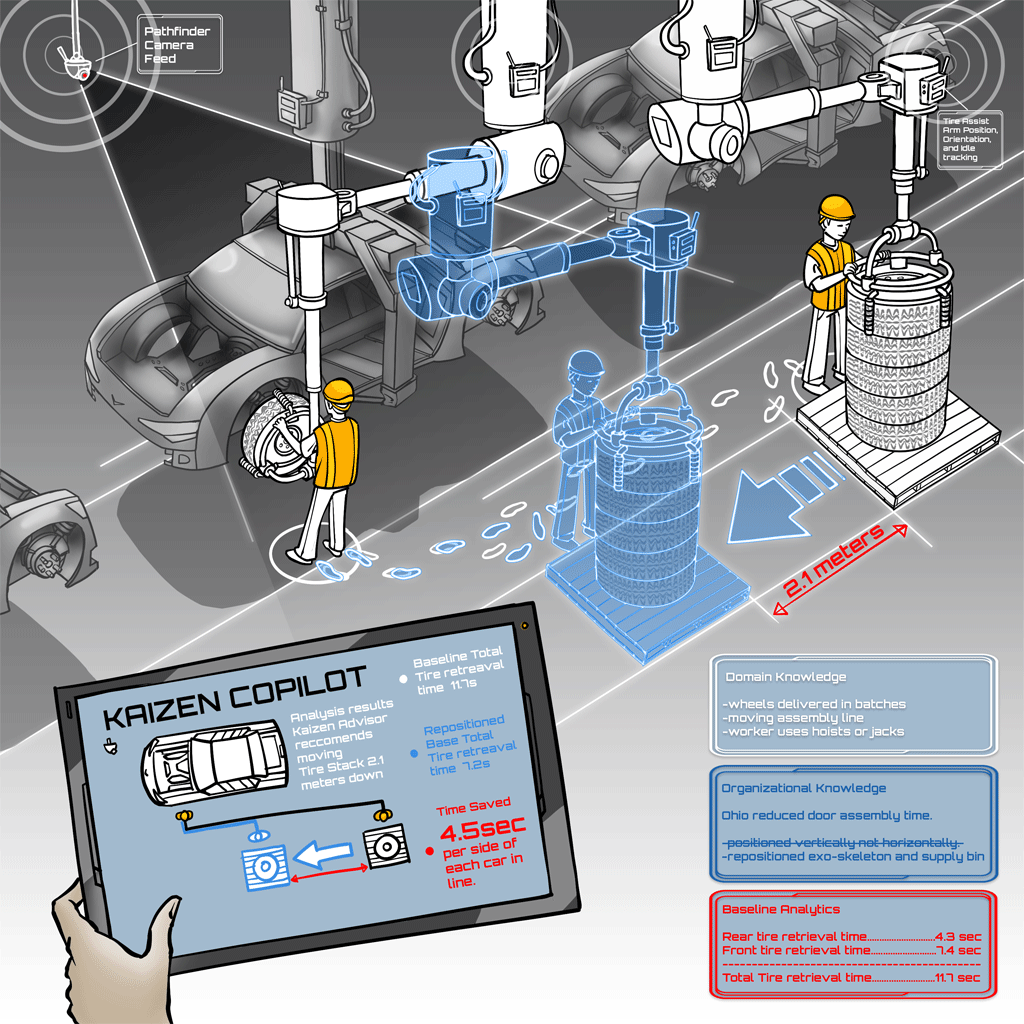
 New Technology Allows Material to Move Itself
New Technology Allows Material to Move Itself
Developed by Norwegian company Wheel.me, the Genius 2 system consists of autonomous wheels that transform carts, skids and tables into self-driving robots. The system is deployed in sets of four or eight wheels, with one wheel acting as the central “brain,” leading and synchronizing with the other wheels.
Genius 2 uses smart indoor navigation technology. LiDAR sensors provide a 360-degree field of view, supported by 3D and ultra-wide lens cameras. Each wheel supports 220 pounds. A set of four is suitable for 880 pounds and a set of eight for 1,765 pounds. The system analyzes mission data for route optimization and performance tracking, and a user-friendly app provides route configuration and floor plan mapping. The system meets industrial safety requirements, including ETL, FCC, CE and SIL-2, performance level D.
Genius 2 is easy to set up. Engineers attach the wheels to an object, register them in the software, map the area, and set up the mission.
Booth 917
Rhino Tool House

 Rivet Tool for Robots
Rivet Tool for Robots
RoboRiv is an electric rivet-nut setting tool for robotic automation. The tool attaches to any robot. The tool is equipped with force and distance sensors to ensure consistent clamp load and error-free installation of rivet-nuts and rivet-studs. A force-control feature helps prevent spin-out of fasteners. Real-time data collection provides visibility into issues like over- or under-tightening.
Engineers can fine-tune parameters such as force, current, displacement, speed, and time for each application. Early alarms for deviations from parameters allow for effective equipment management and calibration. RoboRiv is also equipped with a built-in linear compensation unit to ensure the tool is in the correct position for collecting or setting a rivet nut every time. An onboard full color OLED display provides a visual indicator of correct installation and allows for easy troubleshooting.
Electric tools with QuickDraw technology are faster than pneudraulic and hydraulic tools, because they can detect when a rivet has been fully installed and thus can quickly reset without having to complete an entire stroke cycle.
Booth 712
RivetKing
